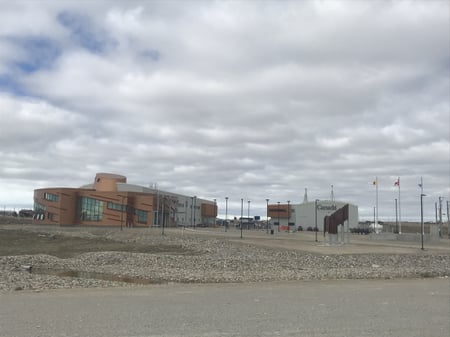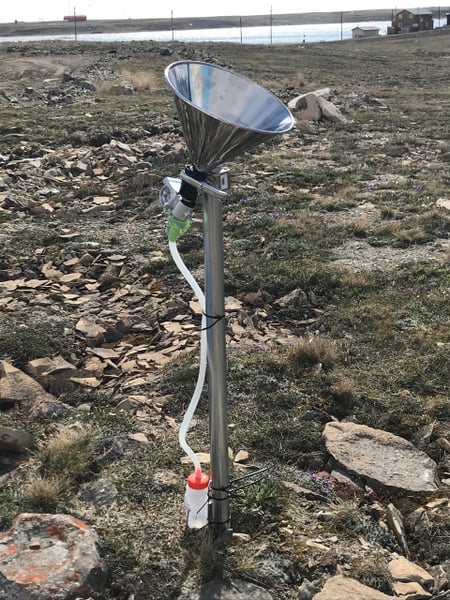Observations identified changes in the Arctic terrestrial water cycle caused by increasing snow and warming permafrost under the condition of warming climate. It is expected that the declining sea ice is associated with the changes of water cycle. The declination enhances evaporation from the open sea surface, resulting in wetter atmosphere and hence larger snow on land through atmospheric dynamics. The increased snow contributes to permafrost warming and the increase of river discharge.
To examine the relationship between the declined sea ice and changing terrestrial water cycle, this research plan focuses on the usefulness of stable water isotope to backtrack the source area of precipitation water and has come to install isotope observational network on ocean, land, and atmosphere of the Arctic. I had visited Canadian High Arctic Research Station (CHARS) in Cambridge Bay (photo 1), which is one of research stations in Arctic Challenge for Sustainability (ArCS) project and installed a precipitation sampler (photo 2). It was longer trip over two days to Cambridge Bay from Narita, staying one night at Yellowknife. A typical tundra landscape, distributed by wetland and lake, spread out during the short flight from Yellowknife to Cambridge Bay. The Gulf of Cambridge Bay was still mostly covered by sea ice. Taxi driver said “this summer is cold and the melting of sea ice is late”. Maximum air temperature recorded around 10℃, with stronger wind. Major buildings of CHARS had already built, while some parts are still under the work. Triplex of CHARS was convenient and relaxed staying facility, whereas I had to do battle terribly with jet lag and white night. Dr. J. Wagner and one student of CHARS helped the installation of the precipitation sampler (photo 2). The sampling of precipitation water will be done by J. Wagner as a collaboration work. After installing it, J. Wagner said “storm track will pass in this weekend”, but there was no rain until I leave. After returning home, I heard from J. Wagner “this summer is quite dry”. I hope that many samples will be collected. This visiting to CHARS was supported by ArCS project of National Institute Polar Research (NIPR) and my many thanks are toward NIPR staffs helped this trip.
Park, Hotaek (JAMSTEC / a member of theme 4)






